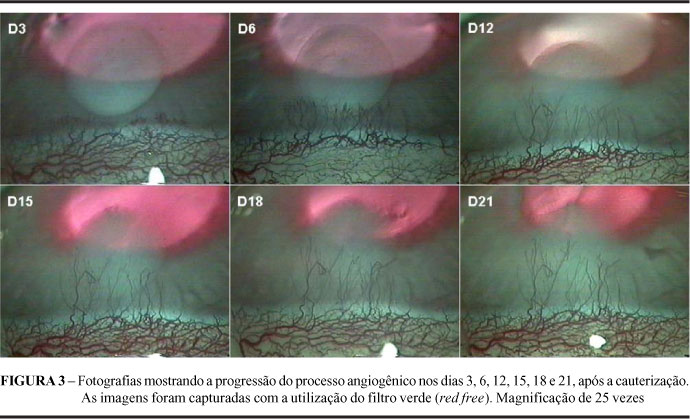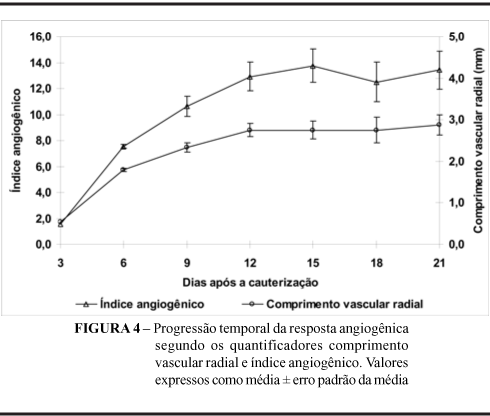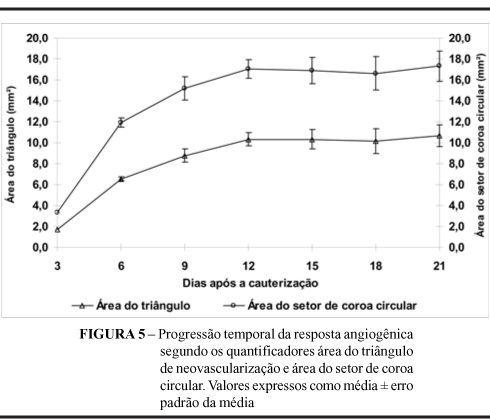PURPOSE: To establish a model of angiogenesis in rabbit cornea induced by punctual alkaline cauterization. METHODS: Six rabbits were submitted to punctual cauterization in right cornea. It was used a circular piece (3 mm) of filter paper, that was previously soaked in 1 M NaOH and placed 1 mm from the superior limbus for 2 minutes. The animals were evaluated at 3, 6, 9, 12, 15, 18 and 21 days after cauterization. Quantification of angiogenesis was performed according to 4 methods: radial vessel length (V), angiogenic index (I), area of the triangle (T) and area of the circular band sector (S), which provide an approximation of the area of neovascularization. RESULTS: The analysis of the quantitative data of angiogenesis showed that neovascular response progressed in a biphasic manner: rising between days 0 and 12 (proliferation), stable between days 12 and 21 (maturation). This pattern was observed on the values of the vascular growth mean rate. Between days 0 and 12, it was 16 times greater than that verified between days 12 and 21. It was found a statiscally significant positive linear correlation among the 4 methods of measurement of angiogenesis. CONCLUSION: The punctual alkaline cauterization of the rabbit cornea induces and sustains corneal neovascularization, so that, it can be used as model of angiogenesis.
Angiogenesis; Inflammation; Alkaline cauterization; Cornea; Rabbits







